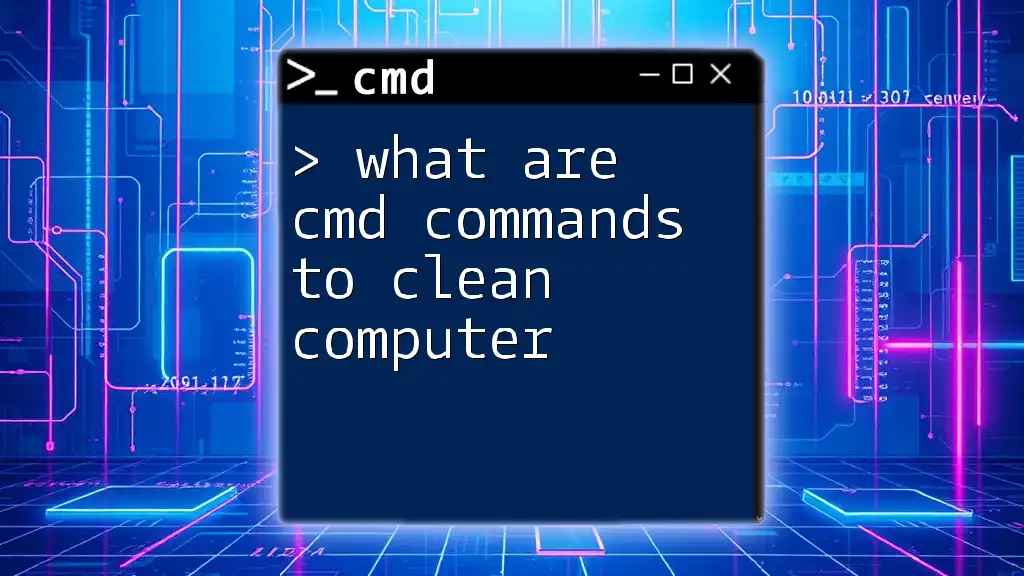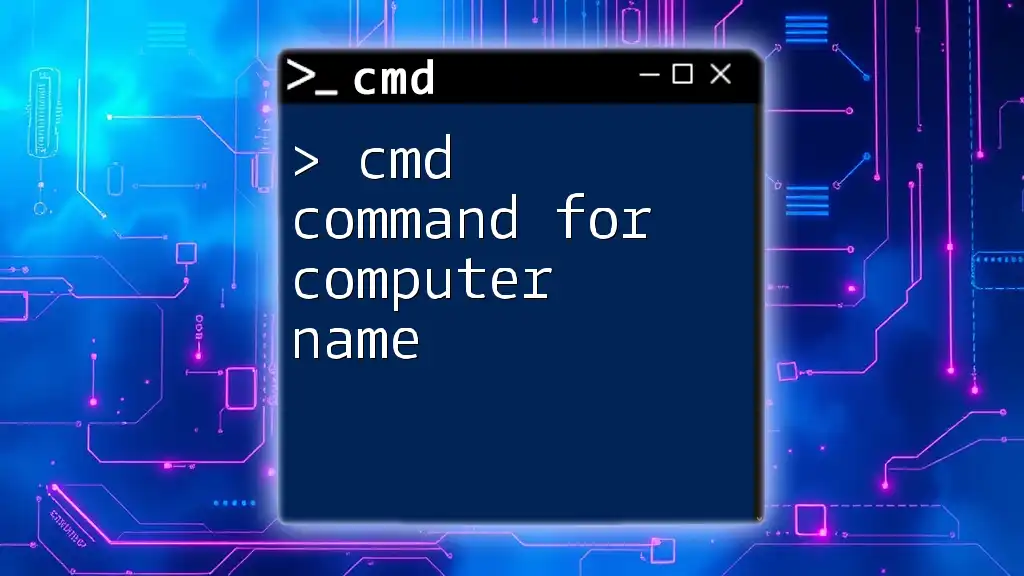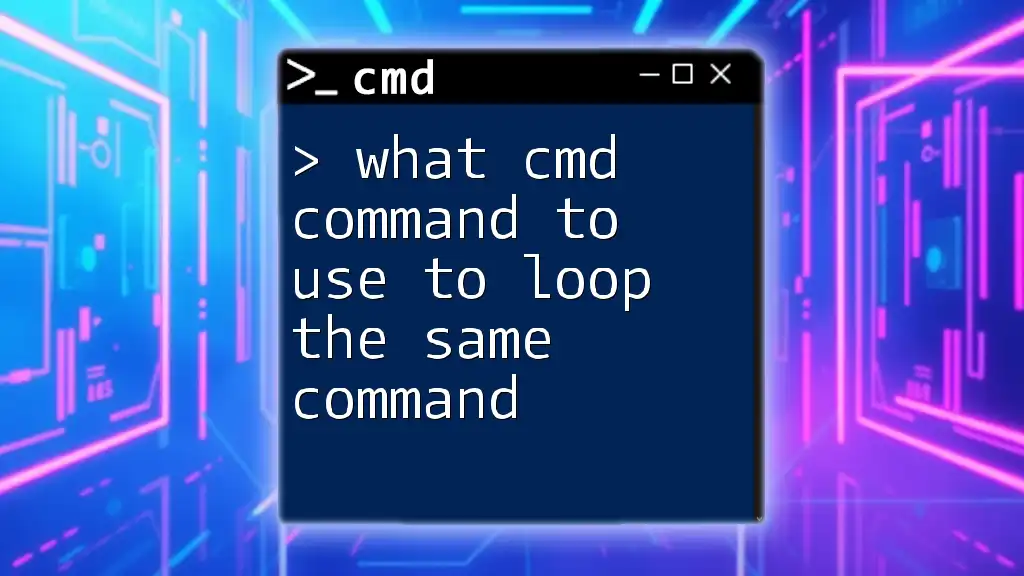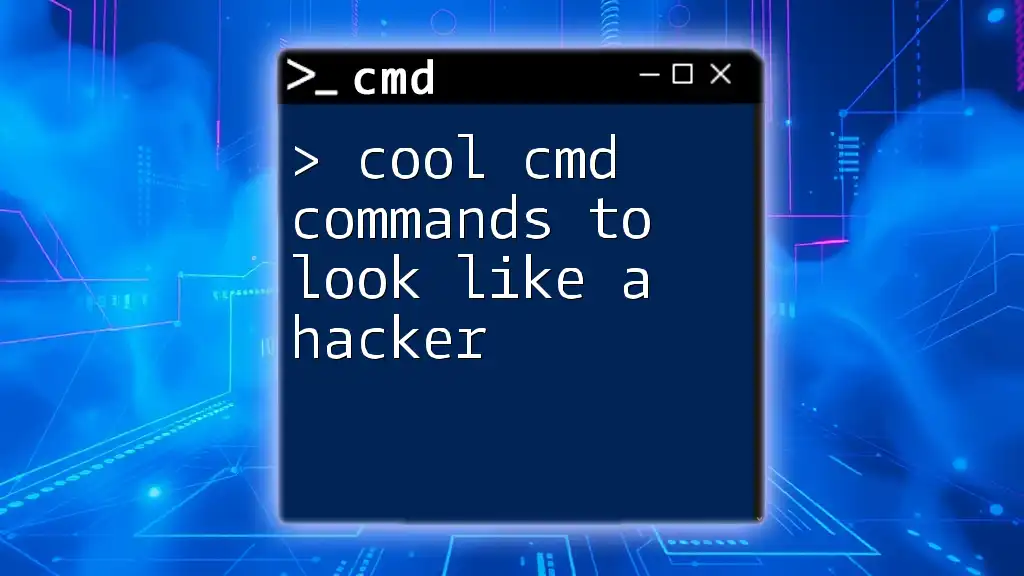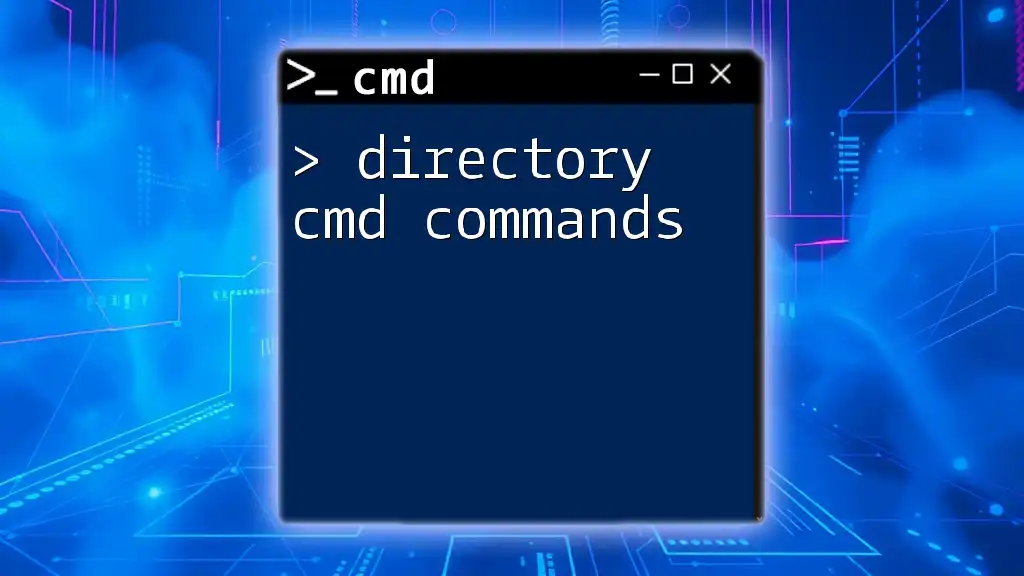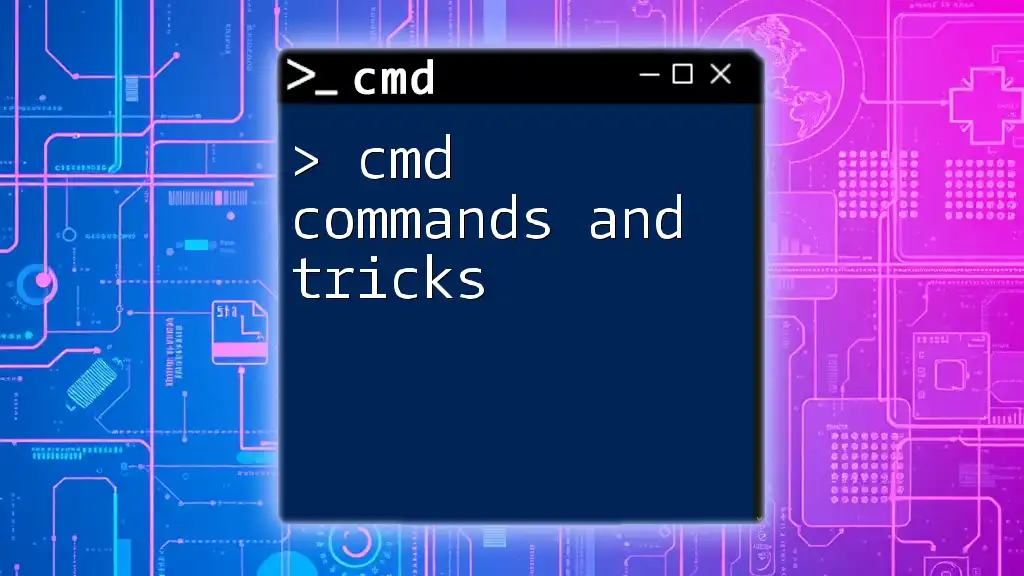CMD commands to clean a computer typically involve using tools like Disk Cleanup and built-in utilities for removing temporary files and optimizing system performance.
Here's a code snippet to delete temporary files using the `del` command:
del /q/f/s %TEMP%\*
Understanding CMD Commands
CMD commands, or Command Prompt commands, allow users to interact with their computer's operating system through text-based input. These commands can perform a wide range of functions, including file management, configuration changes, and system clean-up tasks. Using CMD can be particularly advantageous over graphical user interfaces (GUIs) because they often provide more robust options and can execute tasks faster, especially through scripting.
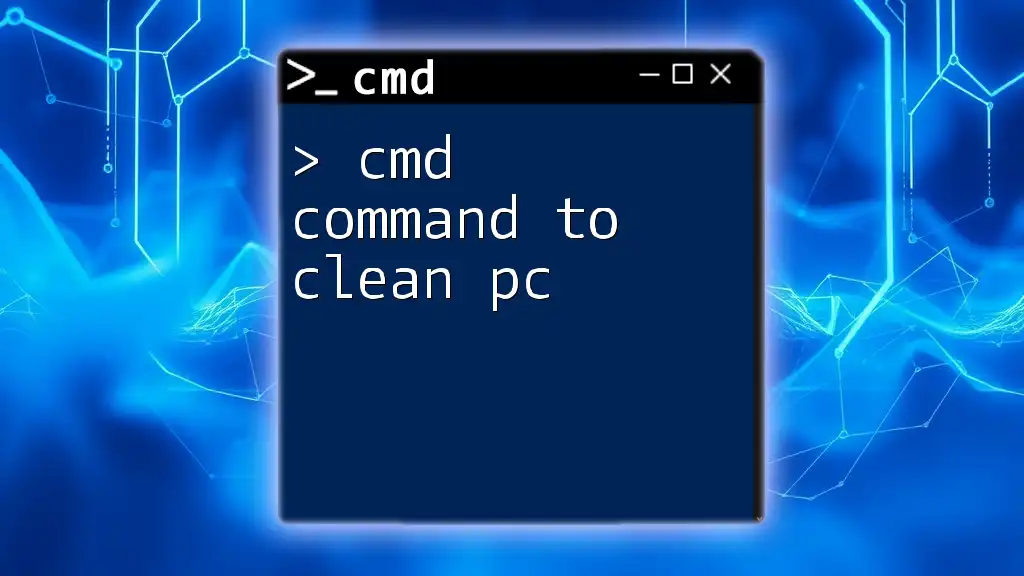
Preparation Before Using CMD
Before diving into cleaning your computer using CMD commands, it's crucial to prepare adequately. Creating backups is vital to ensure you don't accidentally delete any important files. You can back up your data using Windows Backup features or third-party software.
To run CMD commands effectively, you’ll need administrative privileges. To open CMD as an administrator, simply press `Windows + X` and select "Command Prompt (Admin)." This will give you the necessary permissions to perform system-wide changes.
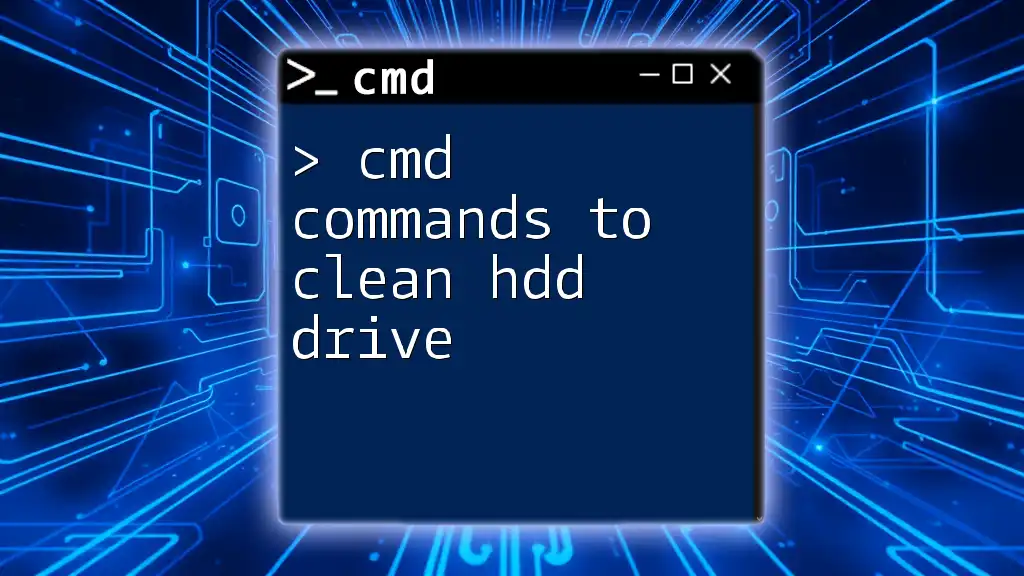
Key CMD Commands to Clean Your Computer
Disk Clean-Up Commands
One of the primary tools for cleaning your computer is the built-in Disk Cleanup utility.
Cleanmgr.exe is a command that launches this utility directly. To use it, type the following in the Command Prompt:
cleanmgr
This command opens a GUI where you can select various categories of files to delete, such as temporary files, system files, and more. It will guide you through a user-friendly interface to help you clean up your disk effectively.
Deleting Temporary Files
Temporary files can accumulate over time and take up significant space. You can navigate to the temp directory and delete these files using CMD.
To delete all temporary files, use the following command:
del /q/f/s %temp%\*
Here's a breakdown of the command:
- /q: Quiet mode, meaning no prompts will be shown.
- /f: Forces the deletion of read-only files.
- /s: Deletes the specified files from all subdirectories.
Using this command regularly can help maintain a clean system and improve performance.
Removing System Restore Points
Managing system restore points is essential for both storage and system performance. Active restore points can consume disk space, so periodically removing them can be beneficial.
To delete all restore points, you can use the following command:
vssadmin delete shadows /all
Note: This action is irreversible, so make sure you really want to delete all restore points. It is often useful to keep at least one restore point available for system recovery.
Clearing DNS Cache
Clearing the DNS cache can resolve various connectivity issues and ensure that your web browsing experience is smooth. To flush the DNS cache, use the command:
ipconfig /flushdns
This command will immediately clear the DNS resolver cache, helping you eliminate any outdated or incorrect DNS entries stored on your system.
Clearing Windows Event Logs
Windows maintains logs of events for troubleshooting and auditing purposes. Clearing these logs can help you begin anew, especially on older systems with extensive logs.
To clear the System event log, use the command:
wevtutil cl System
This command clears the specified log, and you can adapt it to clear other logs like Application or Security by replacing "System" accordingly.
Uninstalling Unwanted Programs
Sometimes, cleaning your computer involves getting rid of unnecessary software. You can use the Windows Management Instrumentation Command-line (WMIC) tool to uninstall programs directly from CMD.
For instance, if you want to uninstall a program called ProgramName, use the following command:
wmic product where "name='ProgramName'" call uninstall
Replace ProgramName with the actual name of the program you wish to remove. This command provides a quick way to handle software you no longer need.
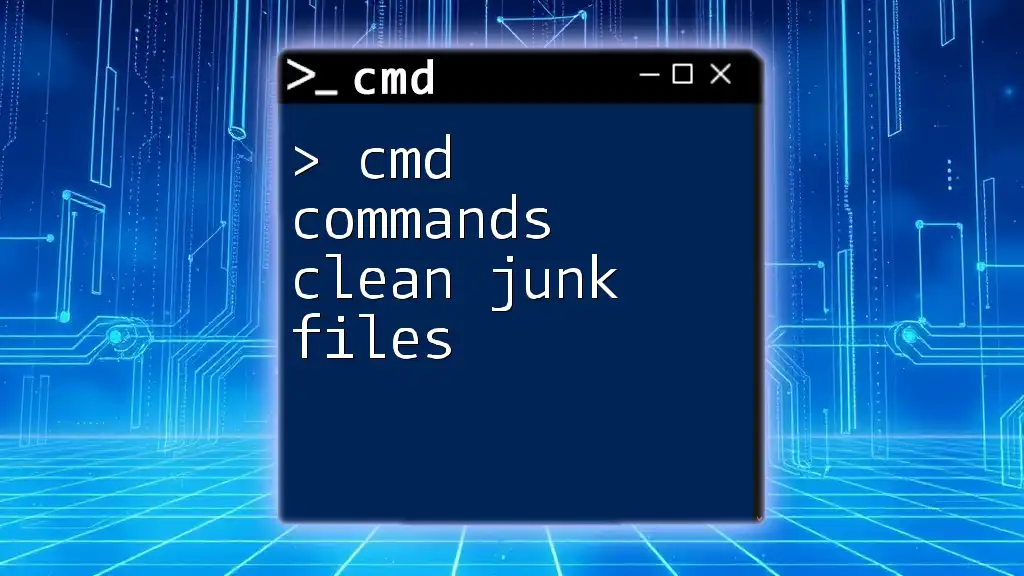
Automating Cleanup with Batch Files
Batch files can automate repetitive tasks, saving time and effort. You can create a simple batch file that includes various cleanup commands, allowing you to perform multiple actions in one go.
Here’s an example of a basic cleanup batch file:
@echo off
del /q/f/s %temp%\*
echo Temporary files deleted.
ipconfig /flushdns
echo DNS cache cleared.
In this script:
- @echo off: This line prevents the commands from being displayed in the Command Prompt for a cleaner execution.
- The subsequent commands delete temporary files and flush the DNS cache, echoing confirmation messages for each action.
To create a batch file, open Notepad, paste the above commands, and save the file with a `.bat` extension. This way, you can run the batch file whenever you need a quick cleanup.
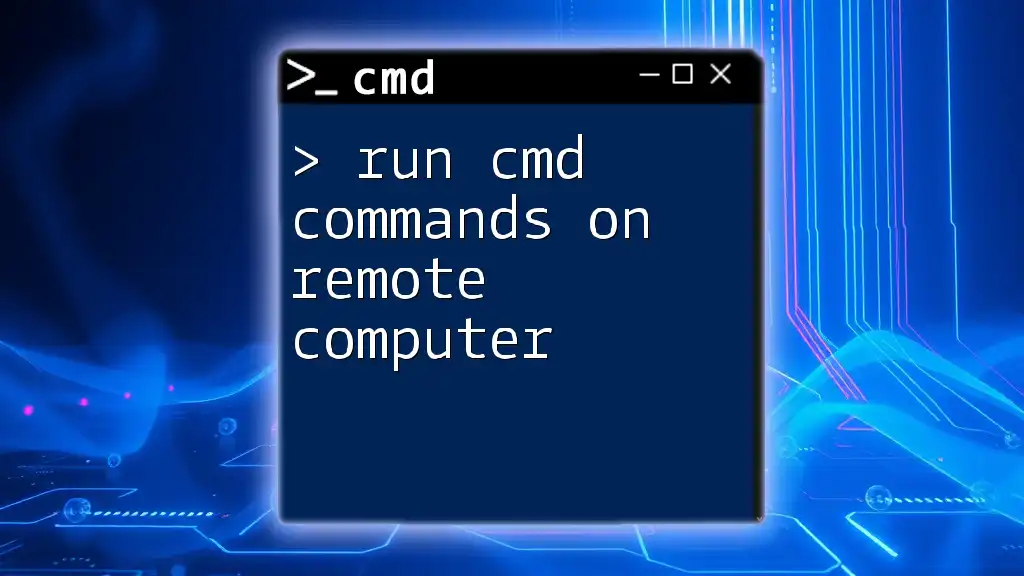
Additional Tips for Maintenance
Regular maintenance is key to keeping your computer in optimal condition. Performing these cleanup tasks monthly can dramatically improve your computer's speed and responsiveness.
Consider using Windows Task Scheduler to automate your cleanup routines. You can create a scheduled task that runs your cleanup batch file periodically, ensuring your computer stays clean without manual intervention.
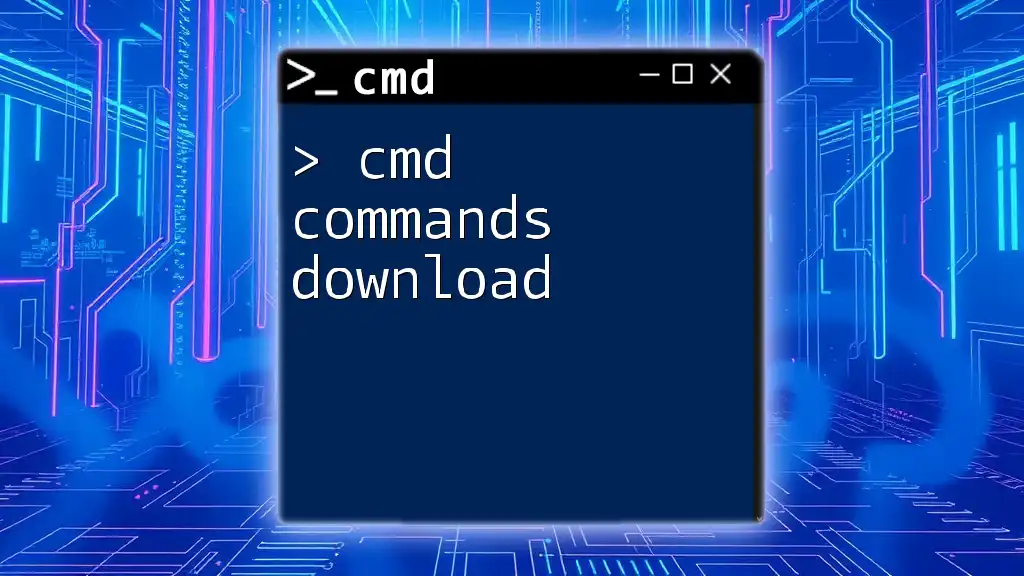
Conclusion
In summary, utilizing CMD commands for cleaning your computer is a powerful approach to maintaining system performance and freeing up space. By incorporating these commands into your regular maintenance routine, you'll ensure that your computer runs efficiently.
Don’t forget to subscribe for more tips on using CMD to maximize your computer skills!
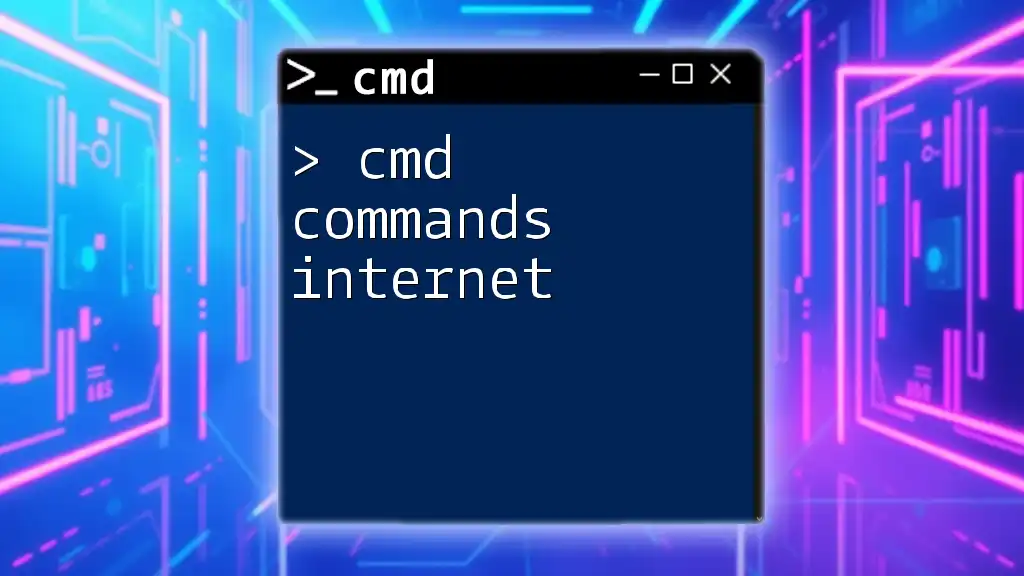
FAQs
Can CMD commands damage my computer?
While CMD can be a powerful tool, using commands without understanding what they do can lead to unintentional data loss or system issues. Always ensure you understand the command and its impact before execution.
How often should I clean my computer?
Regular cleanups are recommended at least once a month to maintain system performance, though more frequent cleanings are beneficial, particularly if you frequently install and uninstall programs or generate a lot of temporary files.

